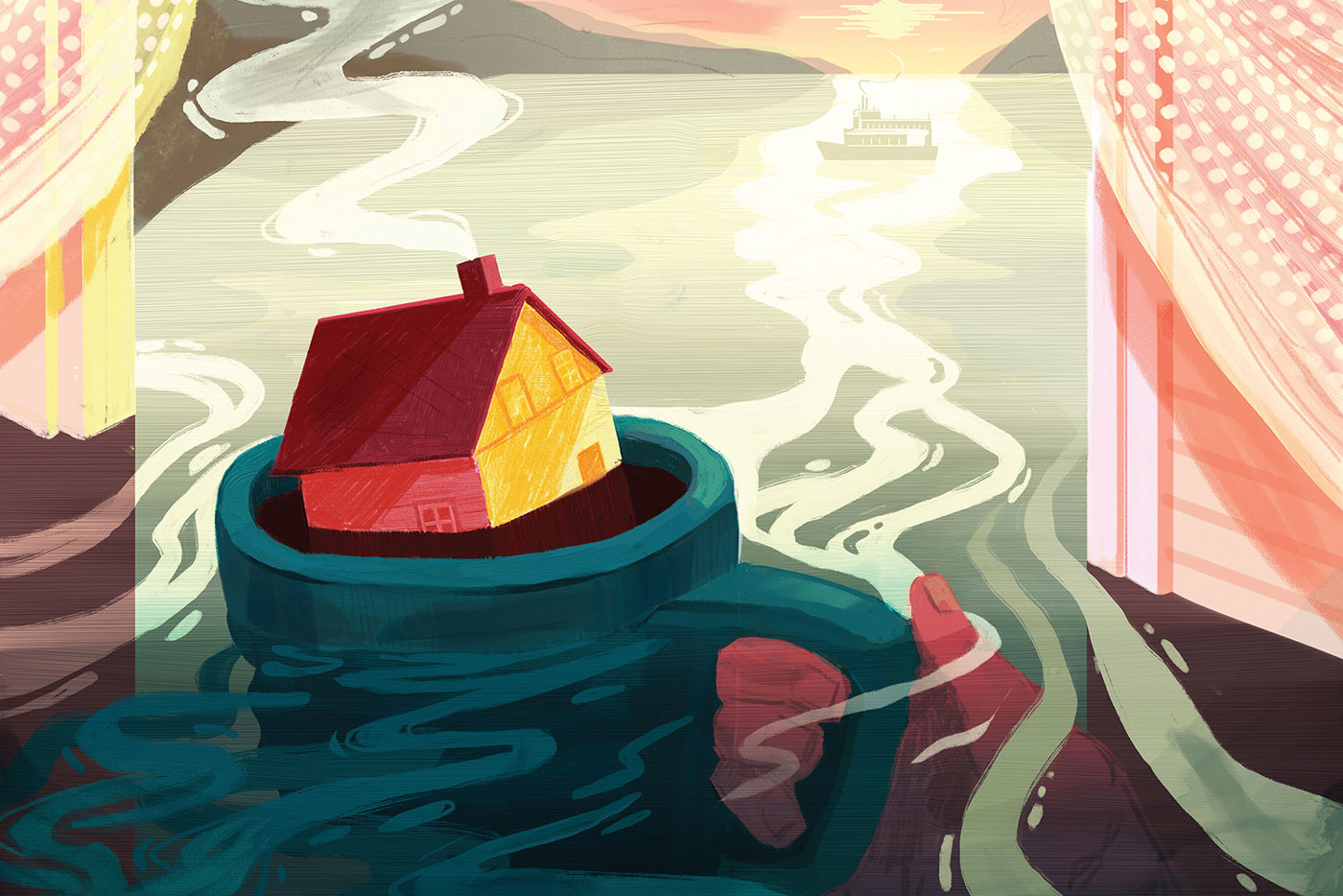The story goes: in 1915 the North Saskatchewan River had a moment of hubris, a brief buoyancy where it puffed its chest outward rising a foot an hour until it got so big for its britches, so swelled with prowess, it spilled itself all over its banks.
On my first days of work as a costumed historical interpreter at the John Walter Museum, I was told that in the oldest house, under the white paint and the settled stains of wood smoke, the wall still harbours the water marks from that day in 1915. I ran my hands over the rough wall making an invisible line to match the line I couldn’t see. I imagined the log walls straining, swelling with the overbearing presence of this uninvited guest. I imagined John Walter holding out hope while tying his riverboat to a tree. I imagined the Low Level Bridge holding the boxcars of a train to hold back the rushing river. In the quiet of John Walter’s house, I asked myself: What does it take to hold a history as sturdy as a house? What does it take to harbour a community amidst the turmoil and rush of the city?
When I think of harbours, I do not think of John Walter’s riverboat docked on the North Saskatchewan River, but why shouldn’t I? After all, it is an easy task to connect the points of his life from boat builder, to ferry maker, to riverboat operator to a constellation we could call a harbour. It is effortless to link the stories of John’s welcoming presence to his house and riverboat being known as places of community gatherings. Perhaps, the idea of a harbour is less metaphor and more reality for John Walter. Perhaps, you can’t lose a harbour — flood or no flood. Perhaps, once a house is a harbour, it is always a harbour.
For many years on Sundays, I interpreted this history to exercisers and wanderers coming off river valley trails looking for respite and to the occasional wide-eyed parent escaping a child’s sporting event at the Kinsmen. They were the “we didn’t know this place existed” and the “I haven’t been here since elementary school” visitors. They were the ones who would say in hushed maudlin voices, “Oh I could live like this.” They moved quickly through the houses, barely pausing long enough to hear the story of the Walter family.
